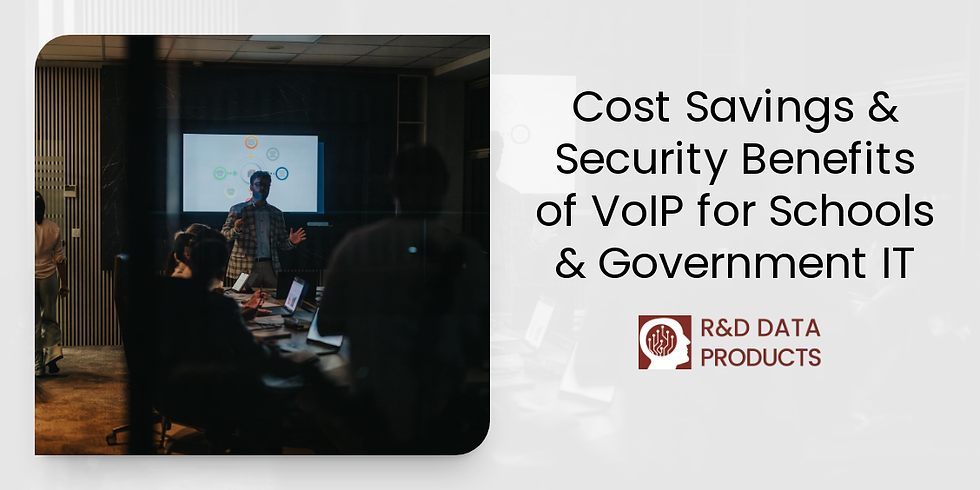VoIP & Remote Work: Ensuring Continuity in Government & Education
- Dillon Diatlo
- Aug 20
- 2 min read
Updated: Sep 8

Table of Contents
Why VoIP Remote Work Continuity Matters
The COVID era proved that schools and government agencies need communication systems that keep running, no matter where their teams are working.
Snow days can turn into remote learning days.
Municipal staff may need to coordinate from multiple field locations.
Emergency events require off-site leadership coordination.
VoIP ensures that the office phone travels with you, whether you’re at home, in a field office, or halfway across the state.
How VoIP Enables Seamless Remote Collaboration
Unlike traditional phone systems, VoIP is location-independent. Your number, voicemail, and call routing follow you anywhere there’s internet.
Key Benefits for SLED Organizations
One Number, Anywhere: Staff stay reachable on their school or agency number via desktop or mobile app.
Integrated Video & Messaging: Platforms like Zoom Phone combine meetings, chat, and calls in one place.
Cost Savings: No need to pay for duplicate cell lines or temporary systems during remote work periods.
Security Considerations for Remote VoIP
Public sector communication can’t compromise on security—especially when staff work off-site.
Fortinet Secure VoIP Gateways protect call data from interception.
Role-Based Access Controls ensure only authorized personnel access sensitive communications.
End-to-End Encryption meets compliance requirements like NIST and CISA standards.
Recommended Platforms & Hardware
R&D Data Products works with trusted, SLED-ready solutions:
| Solution | Use Case | Key Benefit |
|-----------------------|------------------------------|--------------------------------------------------|
| Zoom Phone | District-wide communication | Unified voice, video, and chat for hybrid work |
| Intermedia Unite | Small-to-mid-size agencies | Cloud-hosted VoIP with integrated team collaboration |
| Extreme Networks | Network backbone | Optimizes bandwidth for VoIP traffic |
| Palo Alto Networks | Cybersecurity | Secures remote connections from threats |
Best Practices for Implementation
Assess Bandwidth Capacity
Ensure both in-office and remote staff have stable connections.
Standardize on One Platform
Reduces confusion and training needs.
Enable Mobile & Desktop Clients
Gives staff the flexibility to work from any location.
Provide Security Training
Teach staff to spot phishing attempts and secure their endpoints.
Partner with a Local SLED Expert
R&D Data Products understands NJ-specific compliance and E-rate funding.
Key Takeaways
| Action Step | Benefit |
|-------------------------------------------|----------------------------------------------|
| Adopt VoIP with mobile capabilities | Seamless communication anywhere |
| Use secure, compliant platforms | Protects sensitive school/government data |
| Train staff on tools & security | Reduces downtime and risk |
| Partner with local experts | Faster deployment, fewer headaches |
R&D Data Products helps New Jersey schools and government agencies implement VoIP systems that keep communication open during any disruption.
Ready to future-proof your communication? Get your VoIP continuity plan today.



Comments